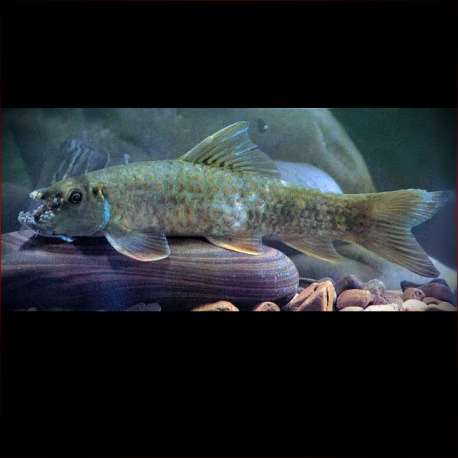More info
Datasheet
| Maximum Size | 12.0cm / 4.72inches |
General Description
Garra orientalis, a member of the Cyprinidae family, is a fish species that shares morphological characteristics with other Garra species, particularly G. salweenica and G. fuliginosa. It is distinguishable by the absence of dark markings on the caudal peduncle and upper caudal-fin lobe, a triangular proboscis with tuberculated anterior margin, and 5-6 indistinct longitudinal stripes on its posterior body. The genus Garra is a complex group with ongoing taxonomic revisions and new species discoveries, leading to a better understanding of their distribution and evolutionary relationships.
Aquarium Setup
The natural habitat of G. orientalis consists of rocky, fast-flowing streams. Therefore, aquarium setup should include a rocky substrate and ample swimming space. Water conditions should mimic its natural environment, with clear, oxygen-rich water and plenty of surfaces for biofilm development. For specific water parameters, refer to the table below.
Behaviour
G. orientalis exhibits typical behavior for a Garra species, using its modified lower lip to cling to surfaces in turbulent conditions. The fish may scrape food items from the substrate using its keratinized upper and lower jaw margins. Some species within the genus have developed specialized adaptations for different environments, such as reduced eyes in hypogean forms.
Feeding and Diet
In the aquarium, G. orientalis should be offered a varied diet consisting of high-quality flakes, pellets, and occasional live or frozen foods like bloodworms or brine shrimp. Their natural foraging behavior can be encouraged by providing sinking algae wafers or vegetable-based foods to supplement their diet.
Reproduction & Dimorphism
Information about the specific reproductive behavior and dimorphic characteristics of G. orientalis is limited. Like many Garra species, they are likely to exhibit breeding behaviors such as courtship displays and egg laying in suitable habitats. Dimorphic features between male and female individuals may include differences in coloration or fin morphology.
Habitat and Distribution
Widely distributed in southern China, G. orientalis is found in watersheds such as the Zhu Jiang, Chiang Jiang, and Min Jiang. Records from Hainan Island require confirmation, while the species is absent in the Yuan Jiang system. Earlier misidentified records from the Salween and upper Irrawaddy systems have been corrected. The species favors rocky, oxygen-rich habitats in headwaters and tributaries for its natural habitat.

